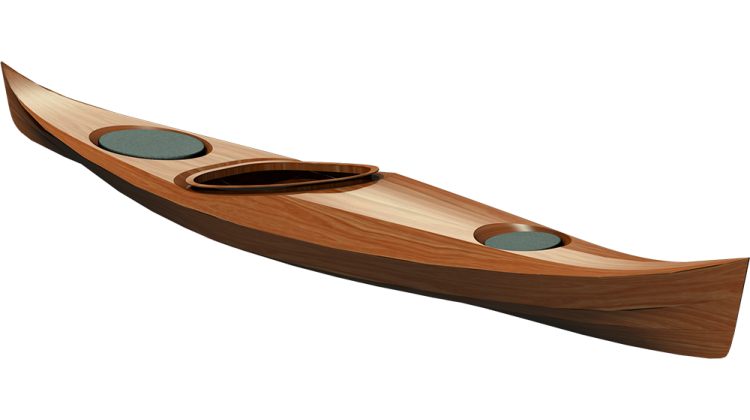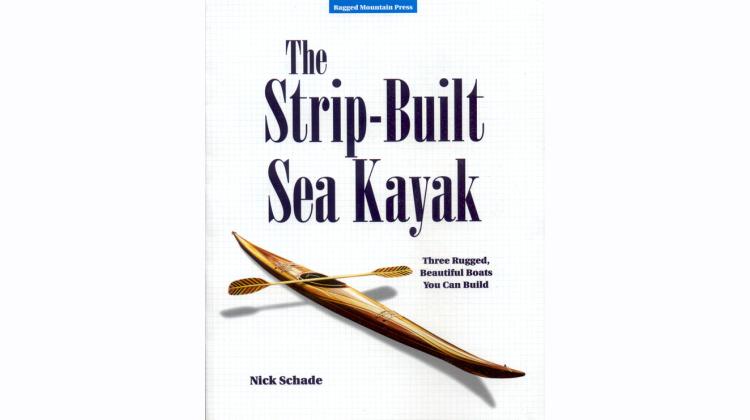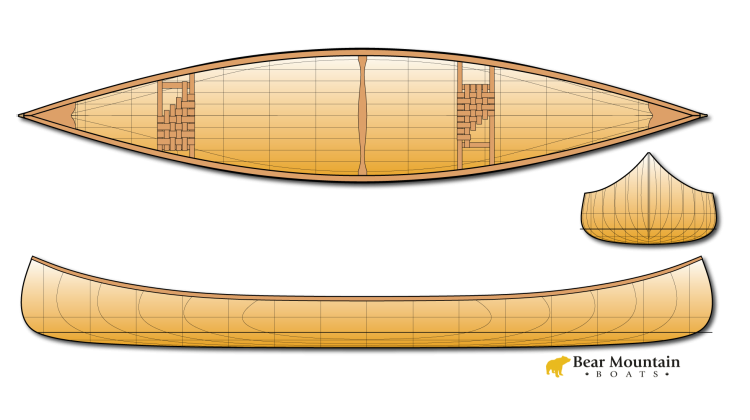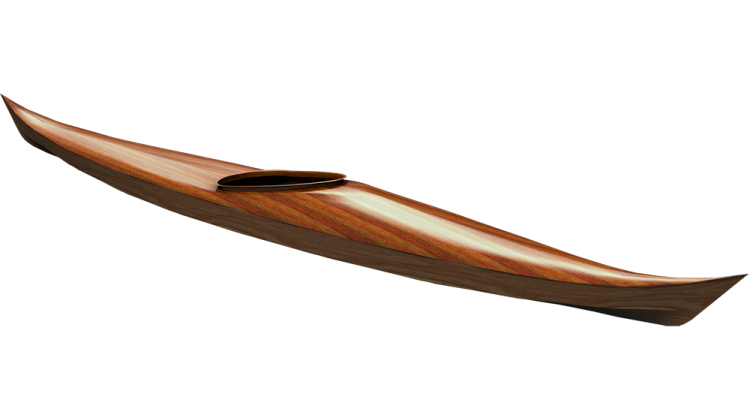In this episode of "Paddling the Petrel Sport," Nick Schade and Bill embark on the assembly process of the Petrel Play SG kayak. After previously unboxing and staining the components, they focus on putting together the hull.
Nick starts by identifying and sorting the hull pieces based on their orientation, making sure the bow and stern pieces are correctly placed. He emphasizes the importance of aligning the puzzle joints accurately for a smooth assembly. The guide provided helps determine the correct orientation.
The duo then moves on to assemble the bottom panels, using a puzzle joint that automatically aligns itself. Nick points out the advantages of this joint over traditional scarf joints, emphasizing the ease of alignment. They use cyanoacrylate (CA) glue, a quick-setting adhesive, to hold the pieces together temporarily.
After successfully assembling the bottom panels, they proceed to the Steeler panels. Nick highlights the challenge of determining the inside and outside since these panels lack bevels. He suggests using the quality of veneers to decide, opting for the smoother side as the outside.
Assembling the side panels involves matching puzzle joints and addressing tabs left from the CNC manufacturing process. Nick demonstrates removing these tabs with a block plane to ensure smooth joints.
The video provides insights into the quick and efficient use of CA glue and an accelerant to secure the puzzle joints. Nick explains the non-structural nature of this adhesive at this stage, as epoxy will be applied later for a more robust bond.
The assembly process is detailed, with a focus on ensuring proper alignment and using the CA glue judiciously. Nick and Bill navigate the challenges of assembly, discussing potential issues and providing practical solutions.
In the concluding segment, Nick announces the decision to break the lengthy video into smaller, more manageable sub-episodes. He outlines the plan to release these consecutively, covering each stage of the assembly process. Viewers are encouraged to subscribe, like, and hit notifications for updates. Nick also mentions the Patreon site, where supporters get early access to videos.
The episode ends with a preview of what's to come in the next episodes, including setting the panels in forms, stitching, and spot welding. The duo's calm and methodical approach, combined with Nick's informative commentary, makes the complex process of assembling the kayak accessible to viewers.
Index:
- 0:00 Paddling the Petrel Sport
- 0:20 Introduction
- 0:40 Identifying Parts
- 4:14 Fitting the Bottom Puzzle Joints
- 5:39 Using CyanoAcrylate (CA) Glue
- 7:26 Spot Welding Puzzle Joints
- 17:55 Assembling Side Panels
- 23:05 Discussion
- 24:17 Outro
- 27:10 Next Episode Preview
(This transcript was generated by YouTube, then I brought it into ChatGPT to clean it up and format it a bit)
Hi, welcome back to The Guillemot Kayaks Workshop. I'm Nick Schade, and this is Bill. We are working on building the Petrel play SG. In the last episode, we did an unboxing, opened up the box, found all the parts, and started staining. In this episode, we will take and assemble the hull. I've sorted out all the hull pieces, put the deck pieces aside, and all the other pieces. I've just got those out of the way so I'm not going to make a mess of them. Now, I have the hull pieces here, and we'll start assembling those together. The first thing we need to do is join these parts with puzzle joints. We need to figure out which way they need to point. We want all the bow pieces in the front and all the stern pieces in the back. It really looks odd if you put them together wrong.
Identifying Parts
Back to this drawing here. The orientation of all these parts on the drawing is correct. If you've got the bow over here, the stern over here, and you look at the Steeler plank, we've got this long tapered bit and then this added piece. So, we want to find those pieces. Here's the little bow piece for the Steeler, and here's the Steeler. If we say that this is oriented correctly, we'll just decide that this is the bow, and that's the stern. So, we can go through and find all the parts. This is looking at the guide here. This is the aft side panel because we've got the wider end down there, and the tongue of the piece sticks into this piece. So that's the aft piece. Likewise, these are the bow pieces. They match together. The trickier one can be the hull bottom piece. Again, looking at this guide, here's the aft bottom and the forward bottom. You just notice the aft is a little bit shorter than the bow. So that's the easiest way to identify it on this boat. Here we've got the shorter piece, and so we'll call that the aft end of the boat. This is the forward end of the boat.
Determining Right Side vs. Left Side
Then the next thing we want to do is determine right side versus left side, port versus starboard, whatever. If you take these panels here, I can assemble this piece under this panel. It sort of only goes in one way. But if I look at this, I notice that there's a bevel on this edge, no bevel on that edge. So again, looking at this piece right along here, there's a bevel, and we want the bevels on the same side of the assembled panels. This doesn't go together here, but the bevel down here. Now we have the bevel side up, and that will fit together.
Assembling the Bottom Puzzle Joints
Now we want to assemble these pieces together. We'll fit the puzzle joints together and then put a little bit of CA glue in just to hold those pieces while we continue assembling the hull. All right, so here we're looking at the puzzle joint up close, and it looks like it's going to go together pretty easily. One of the advantages of this puzzle joint over the traditional scarf is it lines everything up automatically. There's no option for this to be a little bit twisted or out of alignment here. Make sure it's nice and tight and see if we can start to press those pieces down in there. Working on the cardboard, it's a little bit mushy here. But if you have some that are struggling to go together, a bit of wood over the top to protect.
Applying Glue to the Steeler Panels
So, if you have some that are struggling to go together, a bit of wood over the top to protect it. We want this surface to be nice and smooth. Like right in here, that feels good. You feel any step there? Nope, that's nice and smooth. How about right there? That's a little rough yet, right? You feel an edge there. What we're going to use is Superglue to hold these together.
Using CyanoAcrylate (CA) Glue
This is the glue we use; there we go. So, Chesapeake Light Craft has their own labeled glue, but any CA glue will work. This is an accelerant, so basically, super glue cures really quickly, but this makes it cure right now. We don't want to glue this piece down to the piece of wood below it. So, we're going to get a little piece of wax paper and just slip that underneath. If someone were to make the mistake and glue it to the board, you'd probably just break it off. It's going to be a small spot; it's not going to—we're not putting a lot of glue on it. We're just putting a small spot of glue.
Let's grab that utility knife; the bottle has not been opened. It's got a small tip there, and we want to keep a small tip on there. As this gets gummed up, you're going to want to take something and stick it in there to open that hole up. Avoid doing that if you can because the bigger the hole you have in there, the more glue you get on everything, and it just makes a mess. What I like to do is have some spare caps, and I'll just drop, take this cap off, drop it in the thing of acetone, let the acetone clear the glue out of it, and put the other cap on and use that one until the first one's cleaned up.
This part right in here is nice and smooth, so I'm going to attack that first. I'm just going to put little dots, little dabs along there every half inch or so. Do it where everything's nice and smooth, and not don't do it where we've got the lumps. And then there we go, just a couple spritzes of the accelerant.
Spot Welding Puzzle Joints
So that's dry now, yep. So we can use that capability. This one's got a little bit of gap in there, so we're just going to take put a couple drops there, wait a couple seconds, and now that's held in place. And then any gaps like that will be filled by the later epoxy. The epoxy will fill in where it might let a little light through. Yeah, so trying to get that nicely lined up so it's really smooth, and then we'll work our way along the seam, make that nice, really nice and flush there, yep, and continue along.
So I imagine this will all need to be sanded off; we'll give it a light sanding. But basically, we'll glass right over that, so this will be buried under the glass. And because if you hit this with much sandpaper at all, you're going to damage it, right? And so one thing I didn't say is we have the bevel side up. So this is the inside of the boat. Oh yeah, yeah. We are going to have a little bit of visual evidence of this when we're done. And so if we'd done this on the outside of the boat, you'd be looking at it all the time. Right, it's going to be on the inside of the boat, so you won't see it.
Feel the joint before you go on to the next applying glue. Make sure it's all nice and tight and work your way all the way across. The CA glue will wick its way down into that joint. So even if you were to sand it off completely, it would still be holding some. This isn't a structural joint at this point, though. With the CA glue, this is just holding it until we get the epoxy on. Once we get the epoxy on, that will fill in that crack, wick into there, and with glass on both sides, it's super strong. That's been my experience using the CA glue in my projects is that it holds it till it can get something better. Yeah, yeah, you know it's like a clamp, right? Exactly, it's a quick clamp. The only benefit is how quick it is. A lot of the speak Light Craft kits in the instructions, they have you epoxy all these joints. So that's a process; you apply epoxy to them, put wax paper in between, you stack a bunch of them together and put some weight on it. So it's all clamped in the alignment and stays good. And you know, it absolutely works, and it probably visually you won't have these little light spots on the inside of the boat when you're done because it'll be coated with epoxy and it'll all look uniform. It's a whole day because you've got to let the epoxy dry. Right, this is just a quick process. Yeah, and it has happened that some of these puzzle joints pop while I'm doing other assembly processes, but generally, I can just—you know, things are already bent up onto the boat—I can generally just sort of put the parts back in alignment, put a little another spot of glue on them, give them the spritz with the accelerator and hold it for a second, and it's good. So that's the panel assembly process with this accelerant. Don't hose it down, don't make it super wet. Just like I did there, spritz just to make it so everything's been hit by it, and that should be enough. This panel is done. So now we can go ahead and do the rest of the panels.
Again, we want to make sure that the bevel side is up and all the panels match with their bevels. And we should be good. All right, it goes together fairly easily. Yeah, this one looks nice and smooth. I guess we can start there, yeah. How perfect does it have to be? Like, I can feel a little bit there. I don't know if you know, I think you'll learn by doing how good you can make it. And if you think you can make it better, okay. But we don't want to spend you all day trying to make it perfect, right? Eventually, you got to shoot the engineer and move on. Yeah, I think that's about as good as we go, yeah. So I guess we could start back here and just this tiny dot. Is that too much? Those are good, yeah. The first one was big but okay, and is the spacing good there? Yeah, um, how far can you go before you should put on the accelerant? Basically, I go where I'm certain it will stay in place while I'm doing the process. So if you know if I've if it might spring out before that, you know I'll stop and then give a little spritz. It should be, yeah. Oops, so I do feel a little lip there but I don't think I'm going to get any better than that or do you think I could just see, yeah, yeah, you got a little better, yeah, a little bit better, yeah. So I saw what you did there. I was putting it over both edges of the seam; you went on one edge of the seam, yeah. You know, try what works, um, you know, I think most of the time over both pieces will do great but there's times when, um, you know, it needs a little bit of extra persuasion, mhm, yeah. If we get it over the sawhorse, it might have a little bit more support. Okay, I guess you don't want to lift it from behind to poke, man. You do whatever works if you're finding something that is giving you a hard time, you know, try something else. Don't keep on doing the same thing expecting different results, right? When I lifted that up, if it would spring out, the part I had already done, the fact that there's some of this spray from the accelerant on the wood already probably makes it so it kicks off a little bit quicker too, which you need to be aware of that, right? So if you go too far, and yeah, you might end up gluing it before you've got it lined up, right? Yeah, like that; that was quite a bit of overspray, yeah. And this probably just you got to hold it a little, you might be able to get it in by hand then just hold it while you're applying the glue, and right, a little overzealous in my drips. And this we can might be able to get a little tighter there. Okay, so we've assembled the bottom panels, um, put together those puzzle joints. Now we're looking at the Steeler panels.
Discussion:
And one thing that's a little confusing, in general, don't have any of the bevel on it. So, you know what's the outside, what's the inside is sort of left to you and your own devices. I tend to just look at the quality of the veneers; generally, there's going to be one side that's a little smoother and nicer looking than the other side. And I'm finding this is a little bit rough, and this is smooth, so I'm going to call this the outside. We've already stained the ends of these Steelers, and they do have a bevel. So if we just match those up, that's the good side. So, we want to be like this, so the stained side down and the s that puzzle joint. And we want to make sure it gets in as far into that end as possible. The idea here is just to make sure you have a nice fair line there.
You may notice that these long skinny pieces without the bevel on it have some little tabs on them. I don't know if we can get those to be visible on the video here. You see some tabs, and where the bevel is, those tabs are taken off. But these are just part of the CNC manufacturing process. These tabs hold the plywood parts into the greater sheet of plywood. What we want to do is just take a block plane and take those tabs off carefully. We don't want to break the piece, so tab gone on one side. So, it doesn't matter what type of plane you use for that, not really. This is just a little block plane, happens to be a little Lie-Nielsen, but you could actually just use a utility knife and cut those off or a sanding block. I find that a block plane is considered the most efficient, but anything you want to use to remove those.
There's a couple of other places on some of the other panels that have those. Here is the stern of the side panel, and you see this has got a tag right there. So there's a couple of places you want to take those tabs off, but there shouldn't be. The assembly process of these puzzle joints is the same as it was on the bottom panels. Get everything lined up, and sometimes there's some remaining gaps in there at the ends. But again, if you eyeball down it and everything looks nice and straight, it should be good.
We'll just do the same drill here. We want to finish assembling all the hall panels. So we'll just do all of those next. All right, so it does take a little pressure to move these in. Yeah, I think that's as far as it goes. Yeah, looks good. Or is that? Yeah, yeah, that's good. Okay, very good. And knock those tabs off. All right, so now we've got all these other puzzle joints to deal with.
Okay, so that's, you see the bevel sides, this would fit together like this, but the bevel sides are not right. Yeah, and so the alignment will make a difference. All right, can take and move this one over there a little bit. That was pretty quick actually, huh? Yeah, so I noticed when you did this, you tend to not try to overlap them entirely. You leave them out and then push them in. Yeah, that seems to work with this particular puzzle joint. Okay, oh, okay, it's not Universal, right? With the bottom panels, that didn't work so good.
So initially when we did the unboxing of this, I looked at all the parts, and it looked rather daunting, looked like quite a task. But as we're now going through the process in a stepwise fashion, it seems the process really does seem to move quite quickly. When I do this in class at the beginning of the day on Monday in a class, we open the box at the end of the day Monday, we have the hall fully assembled. We're going at it a little more leisurely pace here, but still, it moves along pretty well. And we just finished gluing up these panels with the super glue; that went pretty quickly, 20 minutes or so. Again, with the super glue, that's a process that, using epoxy, could be a whole day process. But with the super glue, it's a 20-minute process.
Now we have our full-length panels essentially; we're ready to start the process of assembling those into the hall. We're going to get into what you call the stitching part of the stitch and glue.
Outro:
Alright, so we're going to wrap up the video right here. It's getting a little long. When I first edited this whole video, it was an hour and a half, and nobody wants to sit and watch an hour and a half worth of stuff. So what I'm going to do is break it down into some sub-episodes. That hour and a half of one episode will now be four episodes, and this is where I'll break for the first one.
We've just taken and assembled all the hall panels. So Bill and I have glued together the hall bottom panels and the hall sides and the Steelers on the hall. Now we're just getting ready to assemble those in place on the forms. We've stitched up the bottom panel, and in the next episode, we will set the bottom panel and side panels into some frames or forms to hold them in place. We'll first have to stitch together the two side panels on either side and stitch together the end of the Steeler.
I'm hoping by breaking it down into digestible chunks, it's a little bit easier to get through. These four episodes all constitute one day of work at a fairly leisurely pace. Bill and I are not rushing here; we're going at a leisurely pace. But there's a lot of information to cover, so I wanted to break that up, make it a little bit easier for you to get through.
My plan is, instead of releasing those episodes one week at a time and dragging it out, I will release these four episodes one day at a time. So this first one today, then the next one where we put the panels together in their shape, and then the next one after that, we'll be stitching it, and the next one after that, we'll be spot welding it all together. Those will all come in consecutive days and get you through that a little bit more quickly but in a little bit more digestible chunks.
So if you're interested in seeing all of that, hit notifications, subscribe, like this video. It helps me a lot. Any other thing that supports what I'm doing here is if you're interested in building a boat, buy plans from me, buy the kit from Chesapeake Light Craft. That's really what we're doing this for. CLC and I are working together to try and get you interested in building these boats. And if you want to have a little bit more direct input into the production of these videos, I have a Patreon site. And I really appreciate my supporters there. Supporters get first look at all these videos; they get it about a week before everybody else does. And those supporters really help out in producing all of these videos.
So until the next episode, thanks for watching, and happy paddling!






